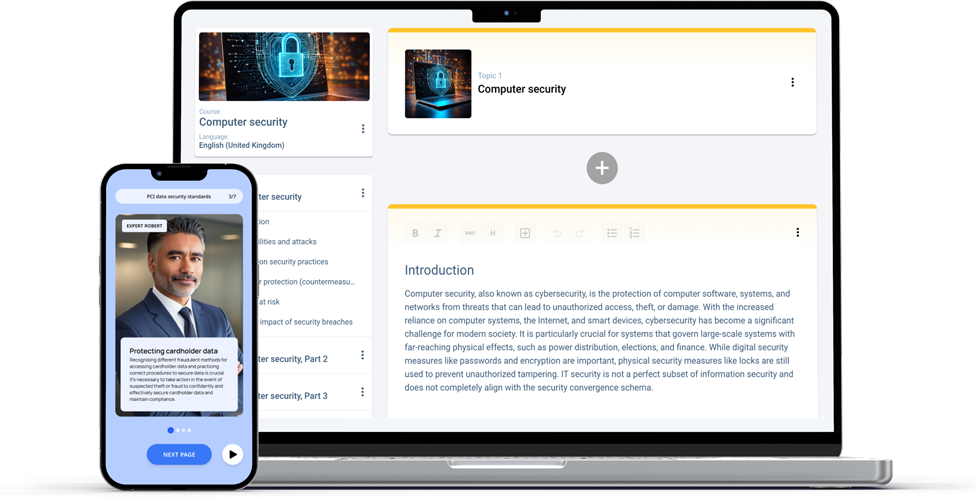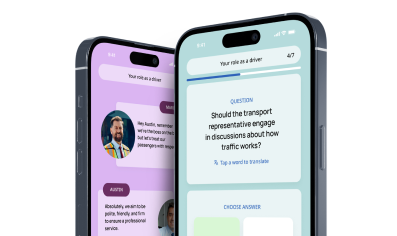In 2025, businesses must effectively educate their customers about their products or services. Well-structured customer education content can establish trust, build brand loyalty, and increase sales. This article will explore various strategies and tactics that can help you educate your customers effectively.
What is customer education?
Customer education is the process of teaching customers how to use and find value from a product or service. It is a crucial aspect of modern businesses that helps customers get the most out of a product or service. Customer education involves creating a learning journey that builds confidence and helps customers see value faster. A successful customer education program includes a mix of resources such as interactive user guides, video tutorials, webinars, and Learning Management Systems (LMS).
Why is customer education so important now?
When educating customers, the first step is to understand their needs and preferences. You can tailor your educational efforts to guide customers to address their specific concerns by gaining insights into their motivations and pain points.
Understanding customer needs requires more than just surface-level observation. It involves delving deep into their behaviours, desires, and challenges to understand their decision-making process. This level of understanding can be achieved through various methods such as surveys, focus groups, and data analysis. Improving this understanding can significantly enhance customer satisfaction scores, which in turn boosts customer loyalty and reduces churn.
Furthermore, developing engaging and informative content that resonates with them is essential once you have the customer journey and identify the key areas where most people or customers require education. This could involve creating how-to guides, instructional videos, or interactive tools that provide valuable information and keep the customers engaged in the learning process.
How to educate customers about your service in 2025
#1 Understand your audience
Before educating your customers, you need to know who they are. Research your target audience’s demographics, interests, and buying habits. This information will guide effective strategies to educate customers about your service and educational approach and help you deliver messages that resonate with them.
Understanding your audience goes beyond just knowing their basic demographics. It also involves delving into their psychographics, values, attitudes, and lifestyle choices. By understanding these deeper aspects of your audience, you can tailor your educational content to meet their needs and create content that aligns with their beliefs and preferences. Tailoring customer education programs to the audience's needs is crucial for enhancing training strategies and demonstrating ROI.
Moreover, conducting surveys, focus groups, and market research can provide valuable insights into your target audience’s motivations and pain points. By listening to their feedback and understanding their challenges, you can create educational video content that addresses their specific concerns and establishes your credibility as a trusted source of information.
#2 Choose the right channels for customer engagement
Once you understand your audience, it’s essential to identify the most effective communication channels to reach them. Consider using a combination of online and offline channels, such as email newsletters, social media platforms, and direct mail campaigns. Tailor your messages to suit each platform and maximise your reach.
When selecting communication channels, it’s crucial to consider your target demographic’s preferences. For instance, if your audience consists mainly of younger individuals, focusing on social media platforms like Instagram and TikTok could yield better results than traditional methods like direct mail. Understanding the digital landscape and staying updated on emerging trends can give companies a competitive edge in reaching their audience effectively. Additionally, it's important to consider the preferences of existing customers to ensure ongoing engagement and satisfaction.
Moreover, the tone and style of your messages should align with the chosen communication channels. While social media allows for more casual and interactive communication, email newsletters may require a more formal approach. By adapting your content to the specific characteristics of each channel, you can enhance engagement and build stronger connections with your audience.
#3 Craft messages that resonate
When creating educational content, focus on highlighting the unique benefits of your product or service. Use language that is clear, concise, and easy to understand. Incorporate real-life examples and case studies to demonstrate how your offering can solve your customers’ problems. Educated customers are more likely to engage with the product and consider additional offerings.
Effective messaging is crucial in capturing the attention of your target audience. You can tailor your content to address these issues by understanding your customers’ pain points and needs. Personalising your messages can create a deeper connection with your audience, making them more likely to engage with your brand.
#4 Create engaging content
Creating engaging content is essential for a successful customer education program. The content should be aligned with the target audience’s needs, adopt microlearning principles for brevity and focus, and be delivered in a conversational tone to enhance accessibility. The content should also be easy to share and offer direct access to education, and be comprehensible for both general readers and users who have higher levels of education. Additionally, the content should be regularly updated to keep customers engaged and informed.
#5 Design a successful customer education program
Designing a successful customer education program requires a structured approach. The program should be tailored to meet the specific needs and preferences of the target audience. The program should also be aligned with the company’s overall business goals and objectives. A successful customer education program should include a mix of educational content, interactive tools, and support resources. The program should also be regularly evaluated and updated to ensure it remains relevant and effective.
9 tips on how to educate your customers about your service
Educating your customers about your service is essential for building trust and ensuring they get the most value from your offering. Here are 8 actionable tips to help you effectively communicate your service and its benefits:
#1 Simplify complex information
Break down your product or service into bite-sized pieces if it involves technical or complex information. Use visuals, infographics, and diagrams to make complex concepts more accessible. Avoid jargon and explain industry terms or acronyms to ensure your potential customers can easily follow along.
When dealing with intricate details, it’s essential to remember that not everyone has the same expertise in the subject matter. By simplifying complex information, you can cater to a wider audience and ensure your message is clear and easily understood. Visual aids can be particularly helpful in conveying complex ideas, as they can provide a more intuitive understanding of the topic at hand.
Moreover, breaking down complex information into manageable chunks can help retain your audience’s attention. By presenting information in a structured and organised manner, you can educate customers through the content more effectively, leading to a better overall understanding of your product or service. An effective customer education program can simplify complex information for better understanding, ensuring that your audience gains confidence and builds a long-term relationship with your brand. Remember, clarity is key when it comes to simplifying complex information.
#2 Speak the language of your potential customers
When educating your customers, it’s essential to speak their language. Avoid using technical terms or industry jargon that may confuse or alienate your audience. Instead, layman’s terms should be used so that they can easily understand. This will help you establish a connection and build trust. Speaking the customer's language can also improve customer retention by making them feel valued and understood.
Understanding the demographics and psychographics of your target audience is crucial in tailoring your communication to meet their needs effectively. You can gain valuable insights into your customers’ preferences and communication styles by conducting thorough market research and customer surveys. This information will enable you to craft messages that resonate with them personally, fostering a sense of understanding and loyalty.
#3 Use storytelling techniques
Incorporating storytelling into your communication and marketing strategy can be a powerful way to engage and connect with your customers. Humans are naturally drawn to narratives, and by weaving stories into your educational content, you can make complex information more relatable and memorable. Whether sharing customer success stories or illustrating real-life examples, storytelling within a customer’s journey adds a human touch to your communication, making it more compelling and impactful. Effective storytelling can also enhance customer lifetime value by fostering deeper connections and loyalty, ultimately leading to increased retention and opportunities for upselling and cross-selling.
#4 Make interactive product demonstrations
Whenever possible, offer interactive product demonstrations to your customers. Show them how your product works and how it can benefit them. Provide hands-on experiences, either through in-person demos or virtual demonstrations. This will help your customers truly understand the value of what you offer. Interactive product demonstrations can also be a part of comprehensive customer education programs, which are essential for tailoring training content to your audience and aligning with broader business objectives.
Interactive product demonstrations are a powerful marketing tool. They allow potential customers to spend time and engage with the product in a way that static images or text descriptions cannot match. By offering interactive demos, your customers can see the product in action, ask questions in real time, and explore its features at their own pace. This builds trust and credibility and increases the likelihood of a purchase.
When conducting in-person demos about customer lifecycle, create a welcoming and comfortable environment for your customers. Provide them with all the necessary information and resources to make their experience enjoyable and informative. Consider incorporating interactive elements such as touchscreens, product samples, or live demonstrations to enhance customer engagement and leave a lasting impression.
#5 Use social media as an educational tool
Social media platforms provide an excellent opportunity to educate your customers. Engage with your audience through informative posts, videos, live Q&A sessions, and educational content. Encourage customers to share their experiences and ask questions, creating a sense of community and fostering ongoing education. Creating high-quality customer education content for social media is crucial as it enhances customer understanding and engagement with your product.
One key aspect of using social media as an educational tool is the ability to reach a wider audience than traditional methods. With billions of users on platforms like Facebook, Instagram, and Twitter, businesses can connect with people from all walks of life and demographics. This broad reach allows for disseminating educational content to diverse individuals, helping spread knowledge and information far and wide.
Furthermore, social media’s interactive nature enables real-time engagement with customers. Businesses across different channels can respond to queries, clarify complex topics, and offer additional resources to enhance the learning experience. This two-way communication fosters a deeper connection between businesses and their customers, increasing trust and loyalty.
#6 Host webinars and workshops
Webinars and workshops offer a more in-depth educational experience for your customers. Cover relevant topics, provide valuable insights, and answer questions from industry experts. Engage your audience and create a dialogue that fosters a deeper understanding of your company, product or service. Webinars and workshops can be integral parts of an effective customer education program, ensuring that educational content is accurate and well-curated.
When hosting webinars, it is essential to choose a platform that is user-friendly and reliable. Platforms such as Zoom, GoToWebinar, and Microsoft Teams offer features like screen sharing, interactive polls, and Q&A sessions to enhance the overall experience for both presenters and attendees. Additionally, promoting your webinar through various channels such as social media, email newsletters, and your website can help increase attendance and reach a wider audience.
#7 Create comprehensive FAQs and knowledge bases
Developing a comprehensive FAQ section and knowledge base on your website or customer support portal can be immensely helpful for customers seeking answers to common questions. Organise information clearly and logically, making it easy for customers to find what they need. Regularly update these resources to address new questions and concerns. Additionally, it's crucial to keep customer education content in FAQs and knowledge bases up-to-date to ensure accuracy and relevance for diverse user experiences.
Consider categorising questions into different topics or themes when structuring your FAQ section to enhance navigation. This approach can streamline the search process for customer education, allowing them to quickly locate relevant information without feeling overwhelmed by a long list of questions. Additionally, a search function within the FAQ section can further facilitate customer access to specific answers, saving them time and effort.
Furthermore, incorporating multimedia elements such as videos or infographics into your knowledge base can offer visual explanations that complement the written content. Visual aids can enhance customers’ understanding of complex topics and procedures, making it easier to grasp the information provided. By catering to consumers with different learning styles, you can ensure that your product’s features, FAQ section and knowledge base are accessible and beneficial to a wider audience.
#8 Measure the effectiveness of your educational efforts with customer feedback
It’s crucial to track and measure the effectiveness of your educational efforts. Analyse website traffic, email open rates, social media engagement, and customer education metrics. Use this data to refine your educational strategies continuously. Tracking customer satisfaction scores can also help measure the effectiveness of educational efforts, ensuring that your strategies positively impact customer satisfaction.
Tracking the website traffic can provide insights into the reach of your educational content, indicating which topics are most popular among your audience. Email open rates help you understand the level of engagement with your educational materials, allowing you to tailor your content better to meet the needs and interests of your audience.
Social media engagement is another valuable metric to consider when evaluating the effectiveness of your educational efforts. Monitoring likes, shares, and comments on social media posts can indicate how well your content resonates with your audience and whether it sparks meaningful discussions.
#9 Educate your audience with Lingio
By using client education and embracing these strategies, you can empower your customers with knowledge that enables them to make informed business decisions. Remember, education is an ongoing process, so regularly review and improve your educational materials to ensure they remain relevant and valuable to educate customers.
Empower your customers with the knowledge they need about your products or services with Lingio’s customised educational courses. In an era where information is paramount, Lingio offers an innovative solution tailored to your business needs, ensuring your customers are well-informed and engaged. Our platform uses the latest technology to create interactive and engaging learning experiences that resonate with your audience, making complex information accessible and easy to understand. Lingio's customer education programs can be tailored to meet specific business needs, aligning with broader business objectives to demonstrate ROI and secure leadership support. Discover the difference Lingio can make in transforming how you educate your customers. Elevate your customer education strategy with Lingio today and witness enhanced customer satisfaction and loyalty.

FAQs
1. Why is educating customers important?
Educating customers about the key benefits of your product or service builds trust, establishes your expertise, and helps customers make informed decisions.
2. Which channels are best for customer training and education?
The best channels for customer education vary depending on your target audience. Consider using a combination of online platforms, such as social media and email, as well as offline methods like direct mail and in-person events. Additionally, implementing customer education programs through an effective Learning Management System (LMS) can enhance your training strategies by tailoring content to your audience and aligning with broader business objectives.
3. How can I measure the effectiveness of my educational efforts?
Key metrics to measure the effectiveness of your educational efforts include website traffic, email open rates, social media engagement, and customer feedback. Use these metrics to evaluate the impact of your educational content marketing strategies and make necessary adjustments.
4. How often should I update my educational materials?
Review and update your educational materials regularly to remain current and relevant. Monitor customer feedback and industry trends to identify areas requiring updates or improvements.


Table of contents
Intro
Why is customer education so important now?
Understand your audience
Choose the right channels for communication
Craft messages that resonate
Simplifying complex information
Speak the language of your potential customers
Use storytelling techniques
Make interactive product demonstrations
Use social media as an educational tool
Host webinars and workshops
Create comprehensive FAQs and knowledge bases
Measure the effectiveness of your educational efforts
Educating your audience with Lingio
FAQs


